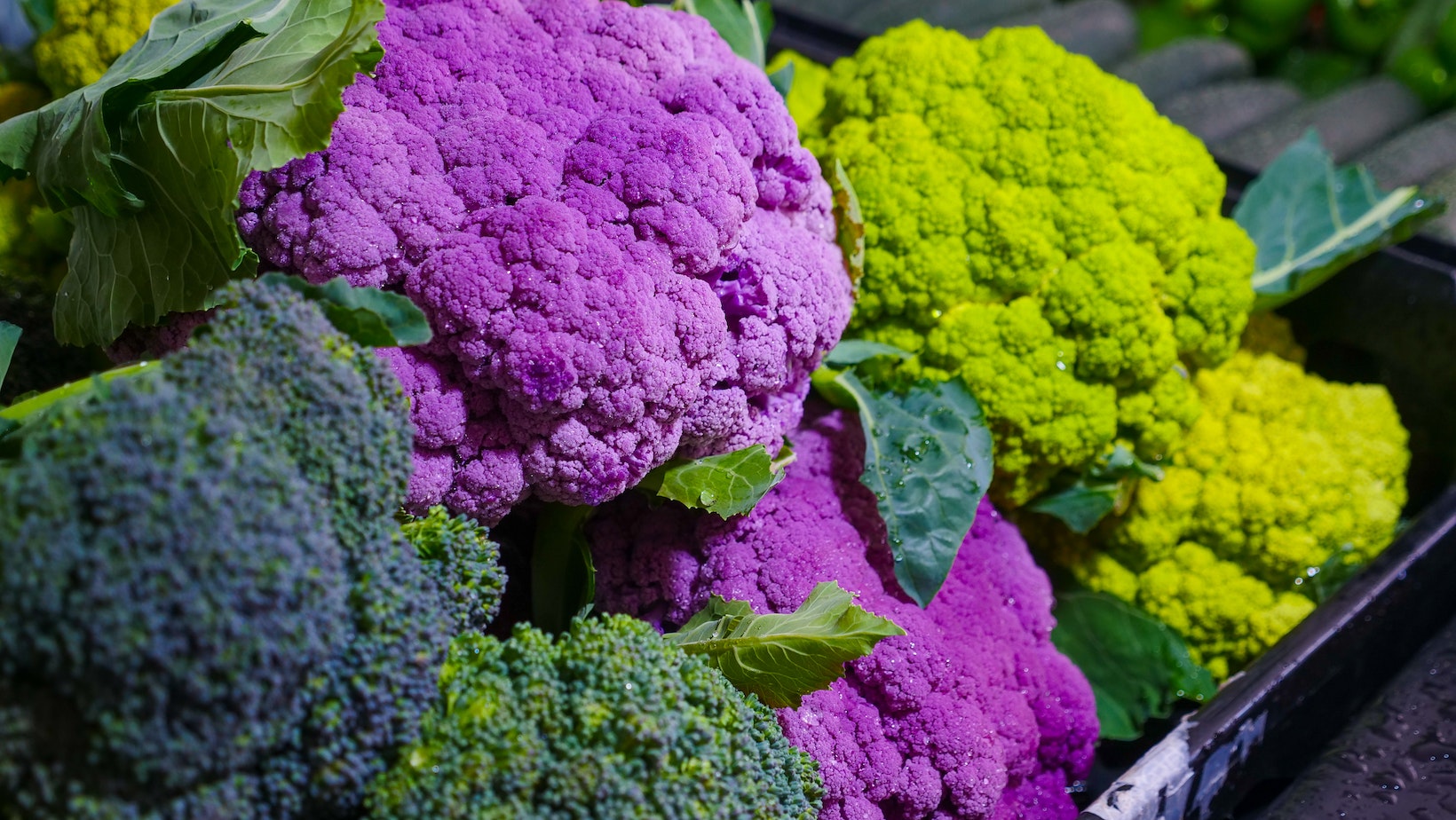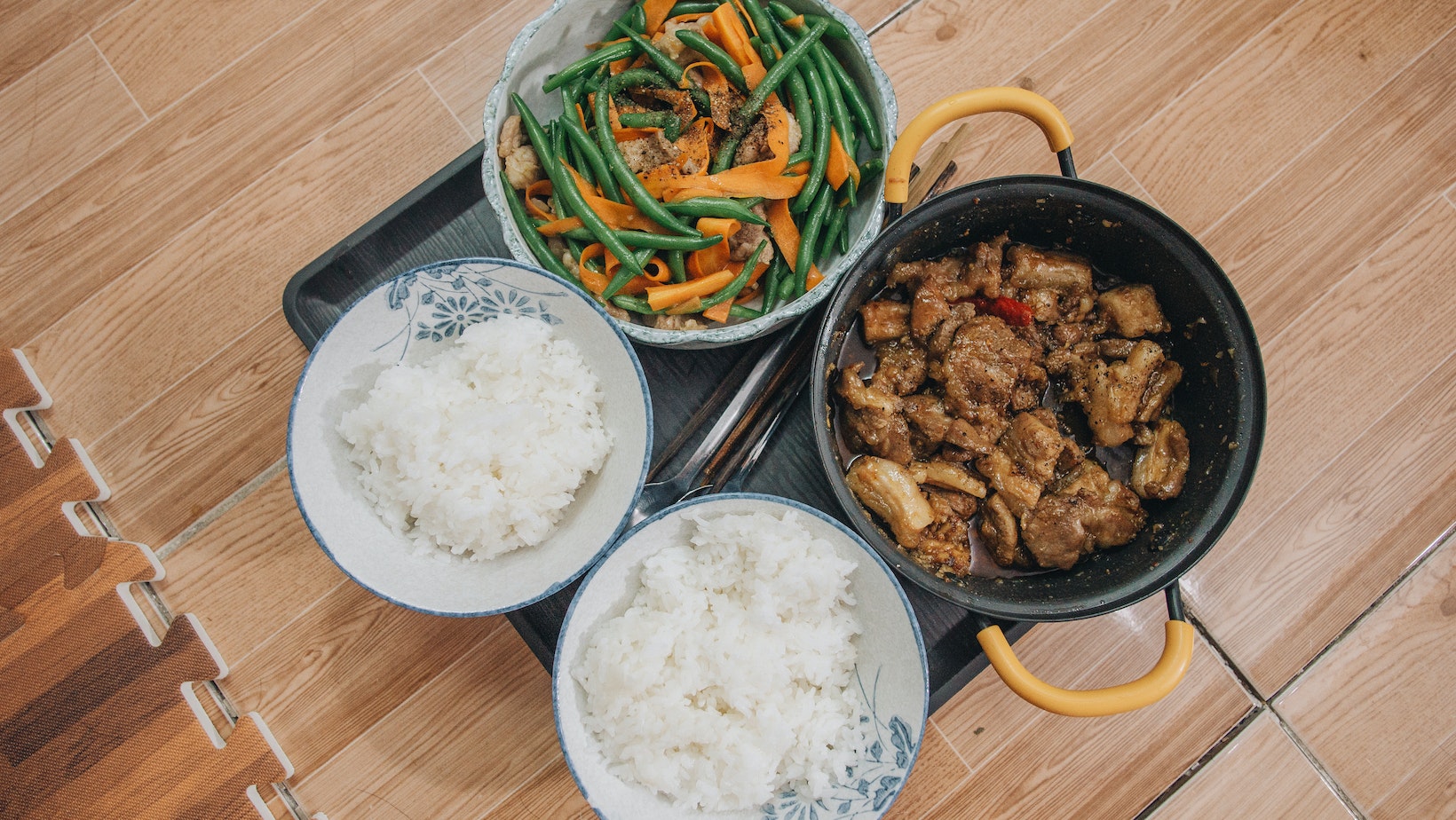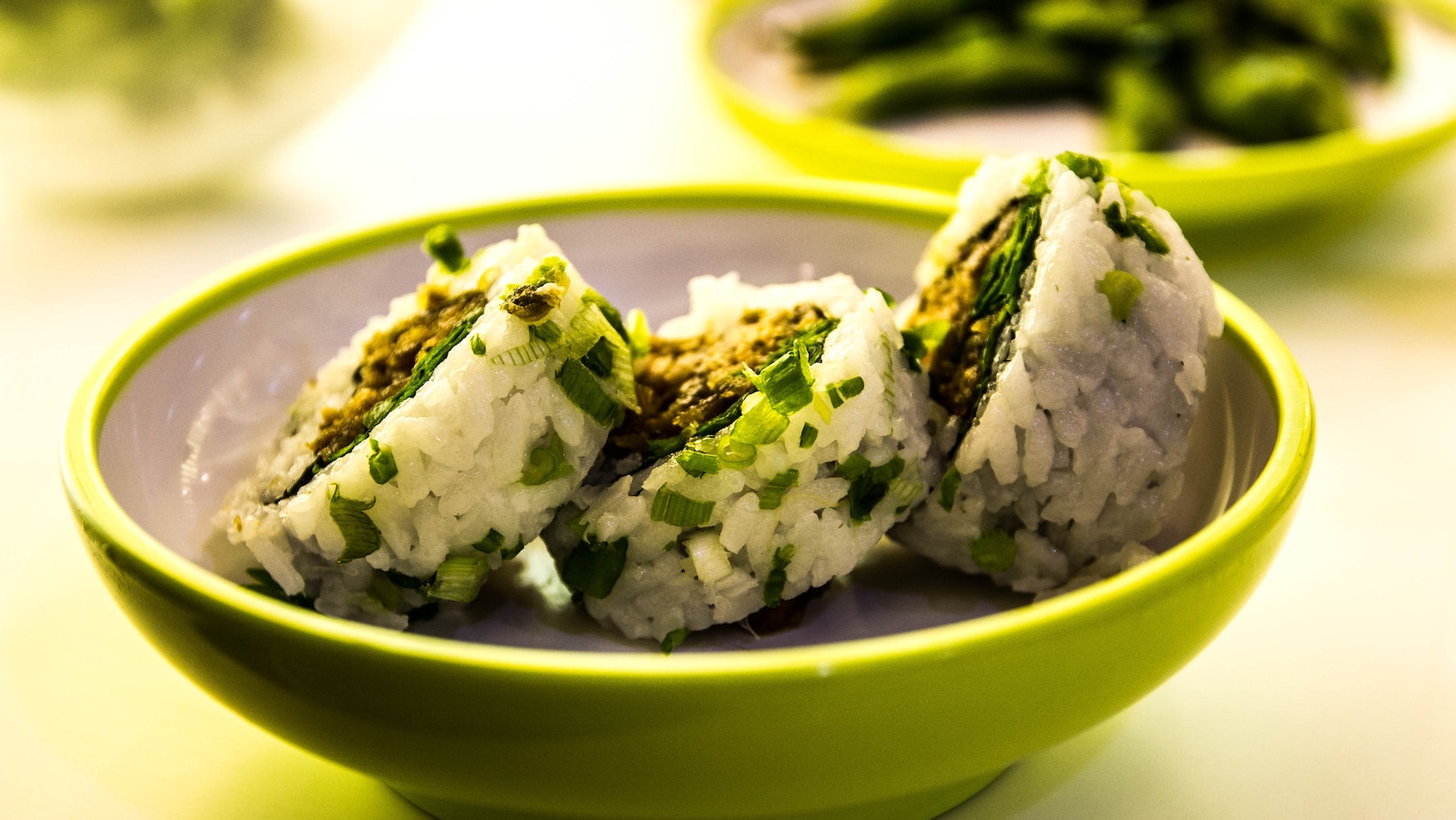
Cauliflower rice, a healthy alternative to traditional rice, provides numerous health benefits. Here are 5 concrete reasons why you should try cauliflower rice:
- Cauliflower is rich in vitamins C and K, which improve immune function and promote heart health.
- It’s low in calories and carbohydrates, making it an excellent option for those monitoring their weight or blood sugar levels.
- Cauliflower is packed with antioxidants that defend against chronic diseases such as cancer and Alzheimer’s.
- This versatile vegetable can be used in many dishes from stir-fries to risotto, adding both flavor and nutrients.
- Cauliflower rice promotes digestive health by supplying fiber essential for normal digestion functioning.
Making cauliflower rice without a food processor involves grating the vegetable or using a kitchen knife to cut it into very small pieces for a unique texture different from traditional rice.
Don’t miss out on the opportunity to add unparalleled health benefits to your meals by incorporating cauliflower rice. Try it today! Who needs a food processor when you can destroy a cauliflower with a grater? It’s like therapy with a delicious outcome.
How to Make Cauliflower Rice Without Food Processor
Cauliflower rice is a nutritious and versatile alternative to traditional rice. If you don’t have a food processor, there are still easy ways to prepare it. Here’s how:
- Step 1: Cut the cauliflower into small pieces and put it in a blender or grinder. Pulse until it looks like rice.
- Step 2: If you don’t have a blender or grinder, use a hand grater instead. Grate the cauliflower and be careful not to hurt your fingers.
- Step 3: Another option is to use a knife to cut the cauliflower into small pieces. It takes a bit more time, but it works just as well.
To make sure the cauliflower rice comes out fluffy, spread it out on a baking tray and bake it in the oven for a few minutes.
Did you know that cauliflower rice is a good source of vitamin C and is low in calories? According to the USDA, one cup of cooked cauliflower rice contains about 25 calories and provides 77% of your daily recommended intake of vitamin C.
If you thought grating cheese was satisfying, wait till you try grating a whole cauliflower for your rice substitute.
Method 1: Grate Cauliflower Using a Box Grater
Grating cauliflower using a box grater is an effective way to prepare cauliflower rice without a food processor.
Here’s a concise 4-step guide on how to do it:
- Remove the leaves and stem of the cauliflower head.
- Cut the cauliflower into large pieces that fit into your box grater.
- Hold onto the stem-like part of each cauliflower piece and slide it up and down against the large holes of the box grater. You can also grate it using the small holes if you prefer a finer texture.
- Continue until all the cauliflower has been grated.
It’s essential to know that you may need to apply extra force when grating near the end pieces, but be cautious not to slip and hurt yourself.
To get better results, try cooling your whole cauliflower in the refrigerator for 30 minutes before starting. This technique can maintain its firm texture during grating, making it easier and faster to prepare.
Another suggestion is for those with larger families or those who often consume rice dishes – buy pre-cut fresh or frozen bags of cauliflower rice from a grocery store or clean market instead of manually preparing them using this method. It is convenient since there are no additional gadgets needed, plus these ready-made packages are usually affordable compared to buying a whole fresh cauliflower head.
Who needs a food processor when you’ve got ninja-like knife skills for cauli-rice prep?
Method 2: Chop Cauliflower into Small Pieces Using a Knife
To prepare cauliflower rice without a food processor, one can use the method of chopping cauliflower into small pieces using a knife. Here is a simple guide to follow:
- Cut off the stems and greens of the cauliflower.
- Cut the cauliflower head into quarters and remove any extra core.
- Take each quarter and begin slicing it downwards into thin slices.
- Cross chop these thin slices into smaller rice-sized pieces.
This method is efficient for those who do not own a food processor or prefer to have more control over the size of their cauliflower rice.
It’s essential to keep in mind that using this method may take more time than using a food processor, but it’s still an effective way to make cauliflower rice at home.
The history of cauliflower rice dates back to ancient times when people would hand chop vegetables finely with knives or mortars and pestles. Today, cauliflower rice has become increasingly popular due to its health benefits and versatility in various recipes. Prepare to make a serious racket in the kitchen while you blend cauliflower into submission for your rice alternative.
Method 3: Blend Cauliflower in a Blender
To make cauliflower rice without a food processor, one can use the method of blending cauliflower in a blender. Here is a 4-step guide to follow:
- Start by removing the leaves and stem of the cauliflower and cut it into small pieces.
- Put these pieces in the blender and pulse several times until the cauliflower is broken down into rice-sized pieces.
- Take care not to over-blend the cauliflower as it will turn mushy and lose its texture.
- Once done, pour out the riced cauliflower into a fine mesh strainer to remove excess moisture.
It is important to note that this method may be messier than using a food processor but still yields similar results. Additionally, using frozen cauliflower instead of fresh can help simplify the process further.
Don’t miss out on having delicious, grain-free cauliflower rice just because you don’t have a food processor! Blend it up in your blender with ease.
Cauliflower rice: because nothing says ‘I’m on a diet’ like substituting a vegetable for a carb.
Recipes Using Cauliflower Rice
Incorporating cauliflower rice into your meals is a healthy and delicious way to add variety to your diet. Below are some recipe ideas to inspire your next cauliflower rice creation.
The following table shows some recipe ideas:
| Recipe Name | Ingredients | Preparation |
| Cauliflower Fried Rice | Cauliflower rice, onions, carrots, peas, soy sauce, garlic, eggs | Sauté onions, carrots, garlic and peas. Add cauliflower rice and cook until tender. Push mixture to the side and scramble eggs. Mix everything together and add soy sauce to taste. |
| Cauliflower Pizza Crust | Cauliflower rice, Parmesan cheese, eggs, garlic powder, salt | Steam cauliflower and blend until fine. Mix with remaining ingredients and press onto parchment paper-lined baking sheet. Bake at 425°F for 15 minutes. Add desired toppings and bake for an additional 10 minutes. |
| Cauliflower Rice and Black Bean Bowl | Cauliflower rice, black beans, corn, avocado, salsa, lime juice, cilantro | Sauté cauliflower rice and black beans. Add corn and cook until heated through. Serve in a bowl and top with sliced avocado, salsa, lime juice and cilantro. |
You can also use cauliflower rice as a substitute in dishes such as stir-fries, sushi rolls, and stuffed bell peppers. The possibilities are endless!
One unique aspect of cauliflower rice is its versatility. It can be flavored with a variety of spices and easily adapted to fit any cuisine. A friend of mine, who is a personal chef, shared with me a delicious cauliflower rice recipe that she serves to her clients. She mixes the cauliflower rice with sautéed mushrooms, onions and garlic, and tops it with grilled chicken and a lemon herb dressing. It’s a low-carb and flavorful meal that her clients love.
Cauliflower fried rice: the perfect excuse to eat vegetables while pretending you’re indulging in a guilty pleasure.
Cauliflower Fried Rice
This nutritious dish uses grated cauliflower instead of rice to provide a lower carb alternative. Here’s a 5-step guide on how to make it:
- Heat oil in a pan over medium heat.
- Add diced onion and garlic, sauté until translucent.
- Add riced cauliflower, peas, carrots, scrambled eggs, and seasonings.
- Cook for 5-7 minutes until everything is hot and cooked through.
- Serve topped with sliced green onions and soy sauce if desired.
To add some extra flavor, try adding ginger or sesame oil. This dish makes an excellent side or main dish and can be customized with your favorite veggies.
Don’t miss out on this healthier alternative to traditional fried rice. Give it a try at your next meal and enjoy all the delicious flavors while sticking to a low-carb lifestyle.
Who needs raw fish when you can have cauliflower rice sushi? It’s like regular sushi, but with fewer scales and more fiber.
Cauliflower Rice Sushi
For those looking for a healthier and gluten-free option, cauliflower rice sushi is a great alternative. This Japanese dish uses cauliflower as a substitute for traditional rice, providing numerous health benefits.
- Cut the cauliflower into small florets and pulse them in a food processor until they resemble rice.
- Spread the “rice” onto a baking sheet and bake at 375°F for about 10 minutes to dry out excess moisture.
- Place the nori sheet onto a bamboo mat and spread the cauliflower rice over it with your hands. Add ingredients such as raw fish, vegetables or avocado slices before rolling it into sushi.
To enhance this dish’s flavor, using seasoned vinegar instead of the regular vinegar to dip your sushi rolls can provide an extra tangy taste. Another tip is to use moistened hands when handling the “rice” so that it sticks together better.
Research shows that consuming cauliflower provides excellent nutritional value such as fiber, vitamin C, K and B6. (Source: Healthline)
Cauliflower rice risotto: for when you want to pretend you’re eating carbs, but also want to fit into your skinny jeans.
Cauliflower Rice Risotto
Cauliflower rice seasoned in a risotto style can be a delicious and nutritious side dish or main course, ideal for those looking for lower-carb and gluten-free options.
Here’s how you can prepare it:
- Start by sautéing onions, celery, garlic and mushrooms in olive oil or butter.
- Add cauliflower rice to the pan and stir well until it absorbs the flavors.
- Pour in some chicken or vegetable broth, cover and simmer until the cauliflower is tender but not mushy. Stir occasionally to prevent sticking.
For extra creaminess, add grated parmesan cheese or a dollop of plain Greek yogurt at the end.
This dish pairs perfectly with grilled chicken or fish, roasted veggies or even as a filling for stuffed peppers. Experiment with different herbs and spices such as thyme, rosemary or smoked paprika to find your favorite combination. Enjoy!
Finally, a rice alternative that won’t leave you feeling like a bloated snowman – cauliflower rice, the only rice that’s eager to fit into your skinny jeans.
Nutritional Facts About Cauliflower Rice
Cauliflower rice, a low-carb alternative to regular rice, has gained popularity due to its numerous health benefits. This article will shed light on some essential nutritional facts about this versatile food item.
Below is a table illustrating the nutritional values of 100g raw cauliflower rice:
| Nutritional Values | Amount |
| Calories | 25 |
| Carbs | 5g |
| Fiber | 3g |
| Protein | 2g |
| Vitamin C | 77% |
| Vitamin K | 20% |
| Folate | 14% |
| Potassium | 9% |
It is important to note that these values may vary based on the specific method used to prepare and cook the cauliflower rice.
In addition to its impressive nutritional profile, cauliflower rice is also easy to make without a food processor. Simply chop the cauliflower florets into small pieces and pulse them in a blender or food processor until they resemble small grains. You can also grate the cauliflower using a cheese grater.
If you’re new to using cauliflower rice in your meals, try substituting it for regular rice in your favorite recipes. It works well in stir-fries, sushi rolls, and even as a base for grain-free salads. Overall, adding cauliflower rice into your diet can offer numerous health benefits while still providing an enjoyable eating experience. Give it a try and see how you can incorporate it into your daily meals.
Cauliflower rice: because sometimes leftovers deserve a second chance.
Tips for Storing and Reheating Cauliflower Rice
When it comes to storing and reheating cauliflower rice, there are a few things you should keep in mind to maintain its texture and flavor:
- Store your leftover cauliflower rice in an airtight container in the refrigerator for up to four days. When reheating, add some water or broth to prevent drying out in the microwave or on the stove.
- If you’re meal prepping, consider freezing the cauliflower rice instead. It can last up to six months in the freezer and should be thawed before reheating.
To make sure your cauliflower rice lasts longer, remember not to add any sauces or seasonings until right before serving. This will help retain its freshness and prevent sogginess. Additionally, try experimenting with different herbs and spices when cooking for more variety in taste.
Interestingly, despite being a recent trend among healthy eaters, cauliflower has been widely cultivated since Roman times. Its popularity was revived during World War II due to its availability and nutritional value. Today, it is widely recognized as a versatile ingredient that can be used as a healthier substitute for many carbs like rice and potatoes.



